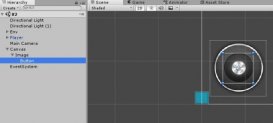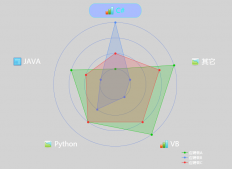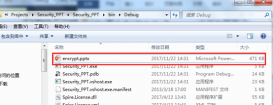今天談一下C#(WinForm)如何發送帶附件的電子郵件!廢話少說,先截圖伺候:

首先C#發送郵件需要smtp服務的支持,我也不知道是不是C#只支持smtp協議,不過好像在MSDN里,Mail這個命名空間下只有介紹smtp的方法的,好像沒看到POP的,算了,先不要說這個
我們暫時用smtp協議來做就好了!因此首先你要確保你的發件郵箱支持smtp服務,據我說知,雅虎郵箱,HotMail郵箱和GMail郵箱都不支持smtp的,不過沒事,還好我們常用的QQ郵箱,163郵箱,新浪郵箱等郵箱都支持smtp的,這樣我們就可以用這些郵箱來發郵件了,哈哈,不過QQ郵箱的smtp服務默認是關閉的,需要我們手動去開通,開通很簡單,進入你的QQ郵箱后,選擇【設置】,在賬戶選項卡里就有個smtp的復選框,打個勾保存一下就OK了。163郵箱和新浪郵箱開通smtp服務也差不多這樣的,很簡單。好了 開通好了接下來就開始來講代碼了 OK!
為了方便菜鳥理解,我把整個程序分成一下幾部分:
- smtp服務信息設置
- 驗證發件人信息
- 添加附件
- 正式發送郵件
- 發送郵件后處理
OK 以下代碼伺候:
一些全局變量,都有注釋的
|
1
2
3
4
5
|
SmtpClient SmtpClient = null; //設置SMTP協議MailAddress MailAddress_from = null; //設置發信人地址 當然還需要密碼MailAddress MailAddress_to = null; //設置收信人地址 不需要密碼MailMessage MailMessage_Mai = null;FileStream FileStream_my = null; //附件文件流 |
1.smtp服務信息設置
|
1
2
3
4
5
6
7
8
9
10
11
12
13
14
|
#region 設置Smtp服務器信息/// <summary>/// 設置Smtp服務器信息/// </summary>/// <param name="ServerName">SMTP服務名</param>/// <param name="Port">端口號</param>private void setSmtpClient(string ServerHost, int Port){SmtpClient = new SmtpClient();SmtpClient.Host = ServerHost;//指定SMTP服務名 例如QQ郵箱為 smtp.qq.com 新浪cn郵箱為 smtp.sina.cn等SmtpClient.Port = Port; //指定端口號SmtpClient.Timeout = 0; //超時時間}#endregion |
2.驗證發件人信息
|
1
2
3
4
5
6
7
8
9
10
11
12
13
14
15
16
17
|
#region 驗證發件人信息/// <summary>/// 驗證發件人信息/// </summary>/// <param name="MailAddress">發件郵箱地址</param>/// <param name="MailPwd">郵箱密碼</param>private void setAddressform(string MailAddress, string MailPwd){//創建服務器認證NetworkCredential NetworkCredential_my = new NetworkCredential(MailAddress, MailPwd);//實例化發件人地址MailAddress_from = new System.Net.Mail.MailAddress(MailAddress, textBoxX4.Text);//指定發件人信息 包括郵箱地址和郵箱密碼SmtpClient.Credentials = new System.Net.NetworkCredential(MailAddress_from.Address, MailPwd);;}#endregion |
3.添加附件
|
1
2
3
4
5
6
7
8
9
10
11
12
13
14
15
16
17
18
19
20
21
22
23
24
25
|
#region 檢測附件大小private bool Attachment_MaiInit(string path){try{FileStream_my = new FileStream(path, FileMode.Open);string name = FileStream_my.Name;int size = (int)(FileStream_my.Length / 1024/1024);FileStream_my.Close();//控制文件大小不大于10Mif (size > 10){MessageBox.Show("文件長度不能大于10M!你選擇的文件大小為"+ size.ToString()+"M","警告",MessageBoxButtons.OK,MessageBoxIcon.Warning);return false;}return true;}catch (IOException E){MessageBox.Show(E.Message);return false;}}#endregion |
4.正式發送郵件
|
1
2
3
4
5
6
7
8
9
10
11
12
13
14
15
16
17
18
19
20
21
22
23
24
25
26
27
28
29
30
31
32
33
34
35
36
37
38
39
40
41
42
43
44
45
46
47
48
49
50
51
52
53
54
55
56
57
58
59
60
61
62
63
64
65
66
67
68
69
70
71
72
73
74
75
76
77
78
79
80
81
82
83
84
85
86
|
private void btnSend_Click(object sender, EventArgs e){//檢測附件大小 發件必需小于10M 否則返回 不會執行以下代碼if (txt_Path.Text != ""){if (!Attachment_MaiInit(txt_Path.Text.Trim())){return;}}if (txt_SmtpServer.Text == ""){MessageBox.Show("請輸入SMTP服務器名!", "提示", MessageBoxButtons.OK, MessageBoxIcon.Warning);return;}if (textBoxX2.Text == ""){MessageBox.Show("請輸入發件人郵箱地址!", "提示", MessageBoxButtons.OK, MessageBoxIcon.Warning);return;}if (txtformPwd.Text == ""){MessageBox.Show("請輸入發件人郵箱密碼!", "提示", MessageBoxButtons.OK, MessageBoxIcon.Warning);return;}if (dataGridViewX1.Rows.Count == 0){MessageBox.Show("請添加收件人!", "提示", MessageBoxButtons.OK, MessageBoxIcon.Warning);return;}if (MessageBox.Show("您確定要發送當前郵件嗎?", "詢問", MessageBoxButtons.OKCancel, MessageBoxIcon.Question) == DialogResult.OK){try{//初始化Smtp服務器信息setSmtpClient("smtp." + txt_SmtpServer.Text.Trim() + comboBoxEx3.Text, Convert.ToInt32(numericUpDown1.Value));}catch (Exception Ex){MessageBox.Show("郵件發送失敗,請確定SMTP服務名是否正確!" + "\n" + "技術信息:\n" + Ex.Message, "錯誤", MessageBoxButtons.OK, MessageBoxIcon.Error);return;}try{//驗證發件郵箱地址和密碼setAddressform(textBoxX2.Text.Trim() + comboBoxEx2.Text, txtformPwd.Text.Trim());}catch (Exception Ex){MessageBox.Show("郵件發送失敗,請確定發件郵箱地址和密碼的正確性!" + "\n" + "技術信息:\n" + Ex.Message, "錯誤", MessageBoxButtons.OK, MessageBoxIcon.Error);return;}//清空歷史發送信息 以防發送時收件人收到的錯誤信息(收件人列表會不斷重復)MailMessage_Mai.To.Clear();//添加收件人郵箱地址foreach (DataGridViewRow row in dataGridViewX1.Rows){MailAddress_to = new MailAddress(row.Cells["Column1"].Value.ToString());MailMessage_Mai.To.Add(MailAddress_to);}MessageBox.Show("收件人:" + dataGridViewX1.Rows.Count.ToString() + " 個");//發件人郵箱MailMessage_Mai.From = MailAddress_from;//郵件主題MailMessage_Mai.Subject = txttitle.Text;MailMessage_Mai.SubjectEncoding = System.Text.Encoding.UTF8;//郵件正文MailMessage_Mai.Body = Rtb_Message.Text;MailMessage_Mai.BodyEncoding = System.Text.Encoding.UTF8;//清空歷史附件 以防附件重復發送MailMessage_Mai.Attachments.Clear();//添加附件MailMessage_Mai.Attachments.Add(new Attachment(txt_Path.Text.Trim(), MediaTypeNames.Application.Octet));//注冊郵件發送完畢后的處理事件SmtpClient.SendCompleted += new SendCompletedEventHandler(SendCompletedCallback);//開始發送郵件SmtpClient.SendAsync(MailMessage_Mai, "000000000");}} |
5.發送郵件后處理
|
1
2
3
4
5
6
7
8
9
10
11
12
13
14
15
16
17
18
19
20
21
22
23
24
25
26
27
|
#region 發送郵件后所處理的函數private static void SendCompletedCallback(object sender, AsyncCompletedEventArgs e){try{if (e.Cancelled){MessageBox.Show("發送已取消!");}if (e.Error != null){ MessageBox.Show("郵件發送失敗!" + "\n" + "技術信息:\n" + e.ToString(), "錯誤", MessageBoxButtons.OK, MessageBoxIcon.Error); }else{MessageBox.Show("郵件成功發出!", "恭喜!", MessageBoxButtons.OK, MessageBoxIcon.Information);}}catch (Exception Ex){MessageBox.Show("郵件發送失敗!" + "\n" + "技術信息:\n" + Ex.Message, "錯誤", MessageBoxButtons.OK, MessageBoxIcon.Error);} }#endregion |
















